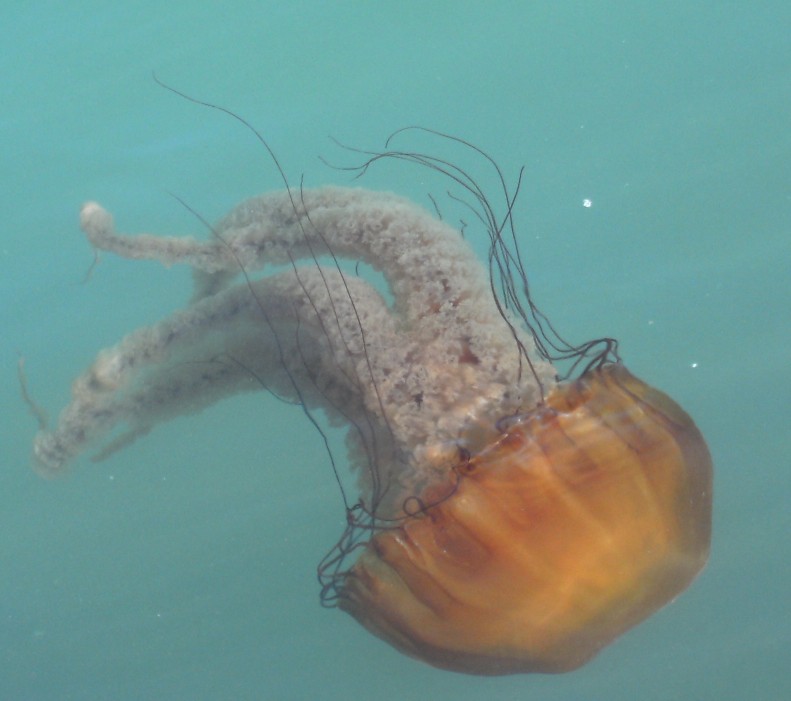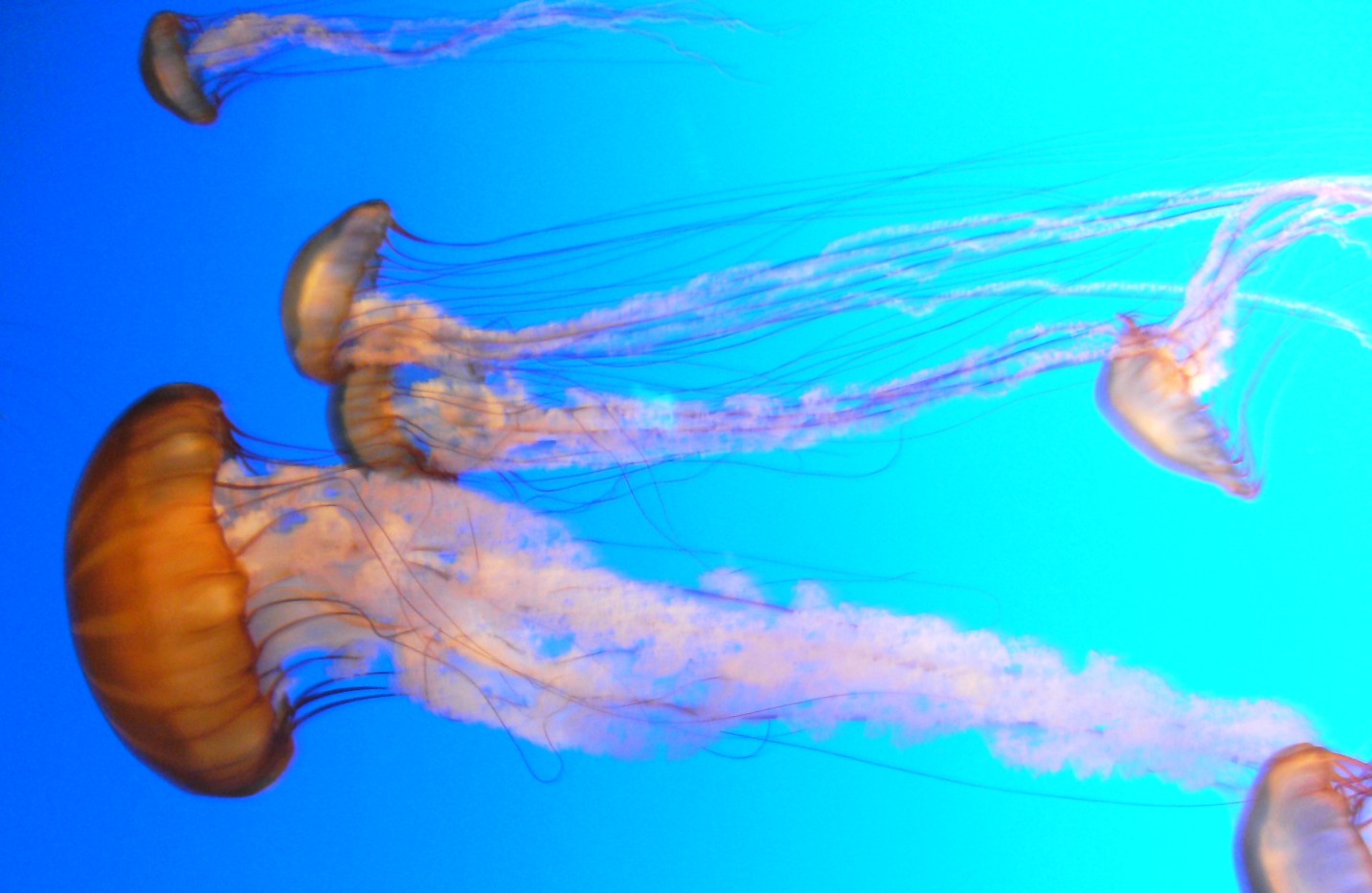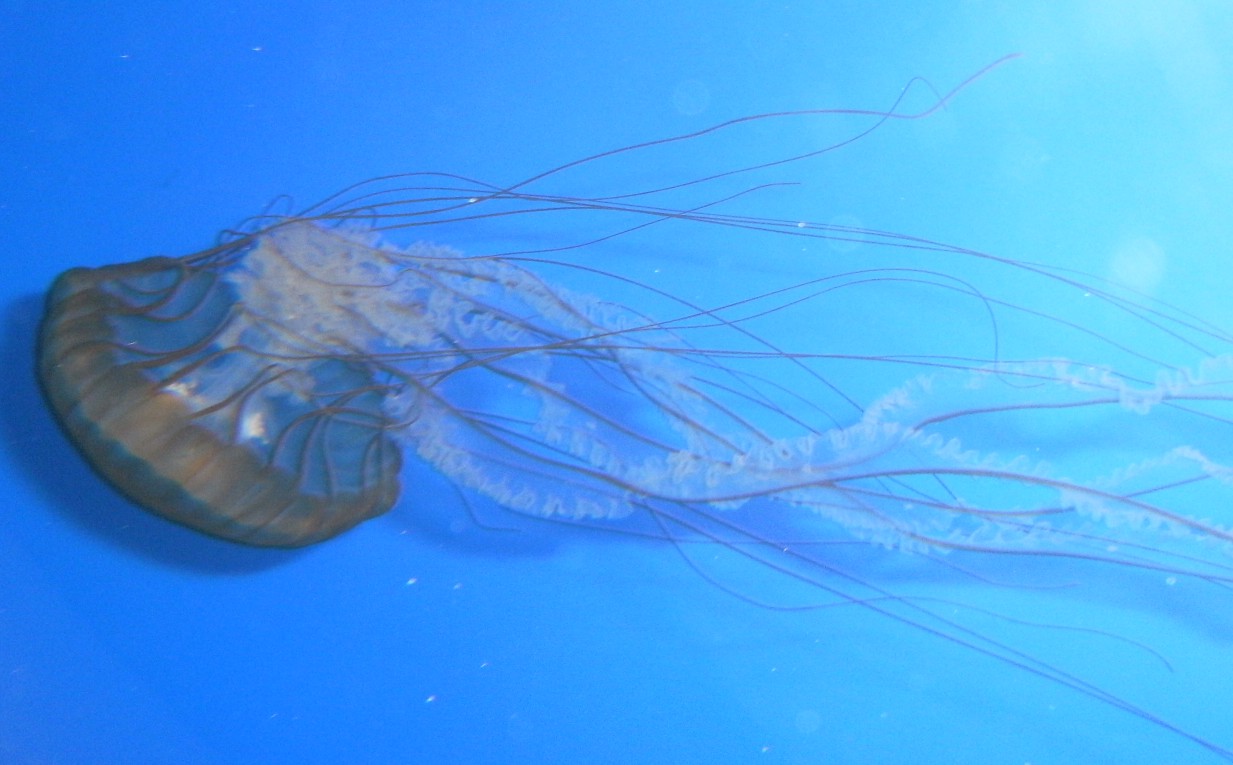How to Distinguish from Similar Species: This is the only similar species likely to be common of the Washington and Oregon coast and the only one with the strongly amber-colored bell. Chrysaora melanaster is common off Alaska and may occasionally drift this far south. C. melanaster has a pale, whitish exumbrella with 16 dark brown radiating streaks and the oral arms are not as strongly twisted. Chrysaora colorata (photo) is an oceanic species found mainly south of San Francisco. Its color is magenta, brown, and blue combining to form a purple pattern on the mainly whitish exumbrella. Many older references confuse our west coast C. fuscescens with C. melanaster.
Geographical Range: Japan, Siberia, northern Alaska to Mexico. Most common off central California and Oregon, especially common in winter.
Depth Range: Epipelagic
Habitat: Pelagic on the open coast
Biology/Natural History: This species may form large groups just offshore on the open coast, and many may strand on the beach. This jellyfish can sting (especially the tentacles) so be careful of contact. Symptoms may including itching or a rash; or more severe symptoms in those allergic to the sting.
Especially in the open ocean, the small red hyperiid amphipod Hyperia is often found riding on the jellyfish feeding on the tissues.
Large Chrysaora
have been
observed to feed on medusae,
ctenophores, and pelagic worms. Since the nematocysts
sting humans I would presume that they may feed on fish as
well.
Predators of the jellyfish include blue rockfish Sebastes
mystinus, which avoid the tentacles and bite off pieces of
the oral
arms.
| Return to: | |||
| Main Page | Alphabetic Index | Systematic Index | Glossary |
References:
Dichotomous Keys:Kozloff, 1987, 1996
Carlton, 2007
General References:
Brusca
and Brusca, 1978 (as C. melanaster)
Gotshall,
1994 (As C.
melanaster)
Johnson
and Snook, 1955 (As C. gilberti)
Lamb
and Hanby, 2005
Morris
et al., 1980 (As C.
melanaster)
Niesen,
1994 (As C.
melanaster)
Niesen,
1997 (As C.
melanaster)
Wrobel
and Mills, 1998
Scientific Articles:
Web sites:
General Notes and
Observations: Locations,
abundances, unusual behaviors:
I do not recall seeing this species in the Salish Sea area,
though I
may have misidentified stranded individuals as Cyanea
capillata lion's mane jellies because of the
coloration. It
is primarily found on open coasts.
The ends of the oral arms in this individual have straightened out. Note the crenulated edges.

Groups of this species can be quite colorful. Photo at Monterey Bay Aquarium by Dave Cowles, August 2010

This individual was swimming near the surface at the entrance
to Moss
Landing Harbor, CA. Photo by Dave Cowles, August 2010
Authors and Editors of Page:
Dave Cowles (2010): Created original page
CSS coding for page developed by Jonathan Cowles (2007)
Rosario Invertebrates web site provided courtesy of Walla Walla University
var _gaq = _gaq || []; _gaq.push(['_setAccount', 'UA-2702192-2']); _gaq.push(['_setDomainName', 'wallawalla.edu']); _gaq.push(['_trackPageview']); (function() { var ga = document.createElement('script'); ga.type = 'text/javascript'; ga.async = true; ga.src = ('https:' == document.location.protocol ? 'https://ssl' : 'http://www') + '.google-analytics.com/ga.js'; var s = document.getElementsByTagName('script')[0]; s.parentNode.insertBefore(ga, s); })();
